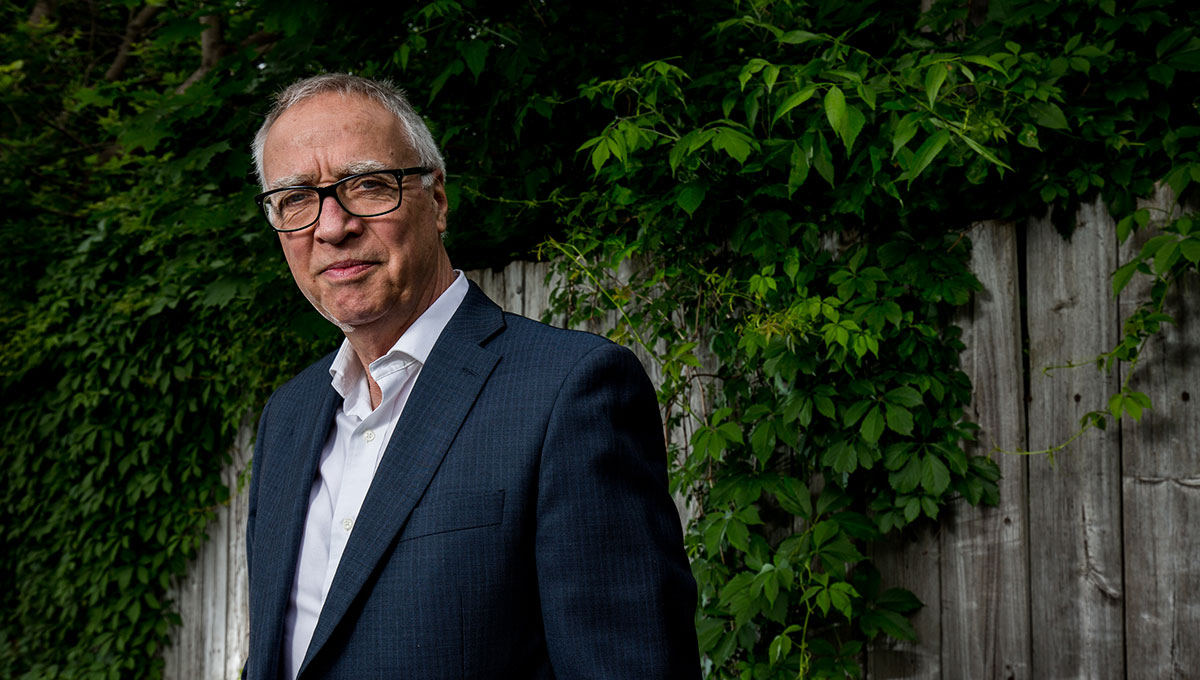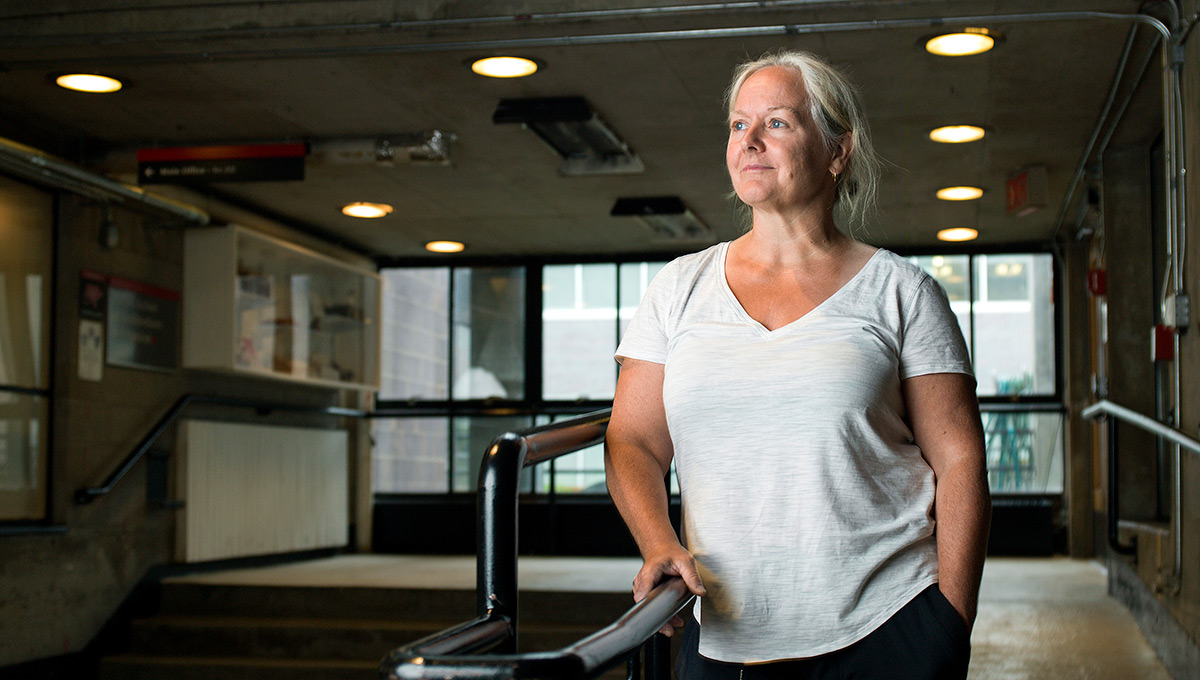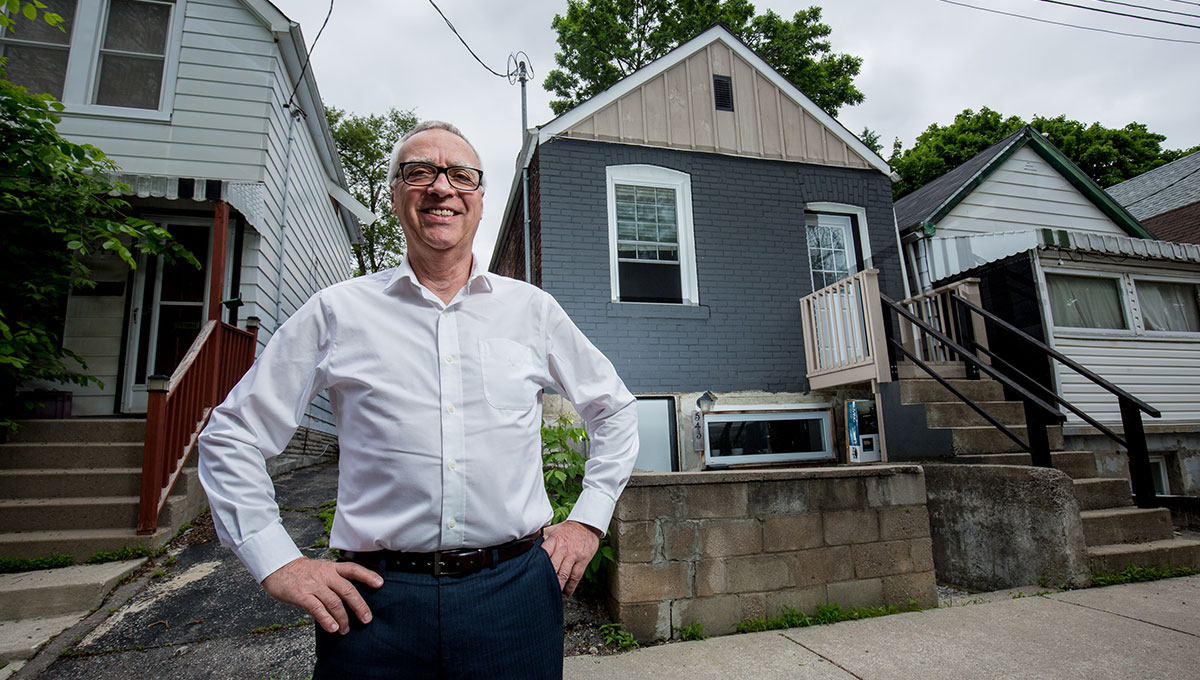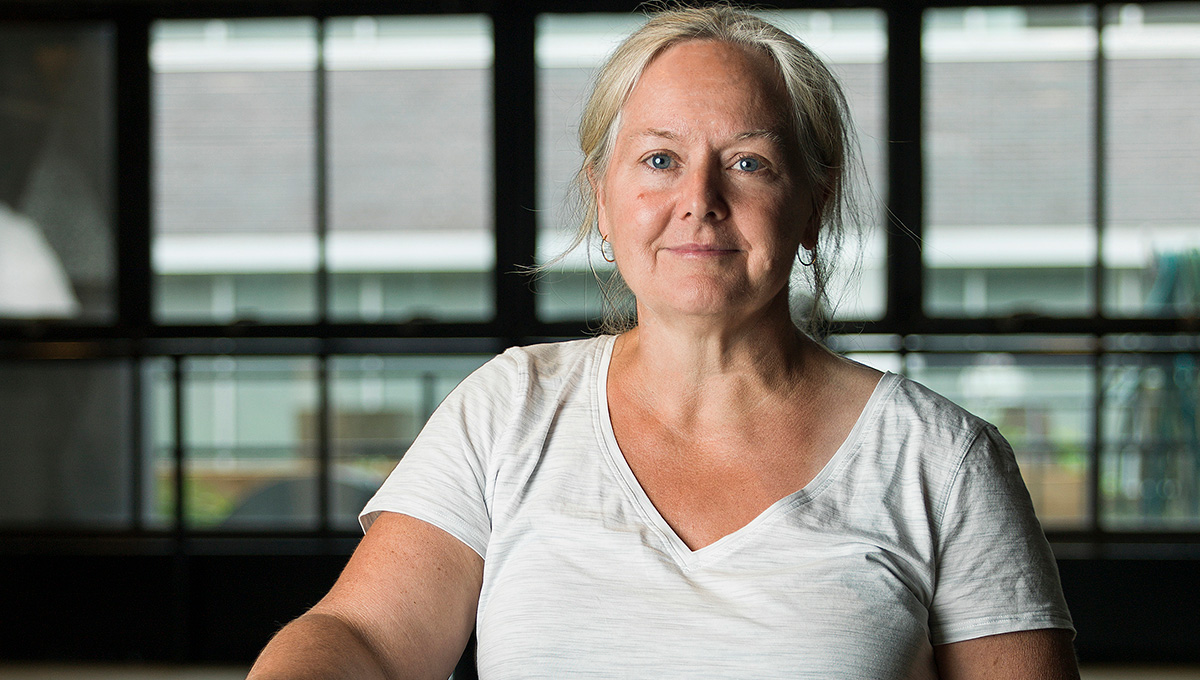By Matt Gergyek
Photos by Giodano Ciampini, Justin Tang and Chris Roussakis
Throughout human history, hemp – the non-psychotropic strain of the plant cannabis sativa – has been many things. The crop can be eaten or used to make clothing, body lotion, oils, plastic, paper – even fuel.
Carl Sagan, the late American astronomer and scientist, went so far as to suggest in his 1977 book that hemp could have been the world’s first agricultural crop, giving rise to human civilization.
Thanks to a new partnership between Carleton University’s Azrieli School of Architecture and Urbanism and a university alumnus, hemp’s next great application could be in sustainable homes.
The tale of the hemp house begins 50 years ago, when Anthony “Tony” Humble enrolled in Carleton’s Bachelor of Commerce program in 1968.

Anthony “Tony” Humble
“My commerce degree was, considering how my career has turned out, invaluable,” says Humble.
After graduating, Humble embarked on a varied career, working in natural resources, finance, and the environmental and biotechnology sectors to name a few.
When he stumbled on the potential to use hemp in constructing homes, he developed his newest business venture, Prosperium.
“[This] is the result of a 20-year quest to find the perfect sustainable technology for communities,” Humble says.
The revelation hit Humble when he discovered Zeoform, an Australian-based company which uses only water and cellulose fibres from hemp to create a “dense, wood-like” product that is non-toxic and biodegradable.
“Gram for gram,” hemp is “as strong as steel, if not stronger,” Humble says. “A tree grows in one direction and that’s the direction the grain goes,” but with Zeoform “the orientation is totally random . . . there’s no grain to split or warp,” says Humble.
With a product in hand and a vision on the horizon, all he needed was a building partner.
Enter, Jesse Bird, a Masters of Architecture student at Carleton.

A HERE+NOW Design Competition Winner
Bird earned international recognition last year when his innovative design of a main residence, office/research space and a tiny guest house took first place at the prestigious 2017 HERE+NOW design competition led by the Association of Collegiate Schools of Architecture (ACSA).
“It was like a euphoric experience, I didn’t know exactly how to handle it and how big of a scale the win actually was,” Bird says.
He beat out nearly 200 submissions from more than 50 architecture schools across North America.
Humble saw a Carleton story about the win and couldn’t resist the opportunity to connect with his alma mater.
“It was one of those magic moments . . . Jesse’s an amazing young man,” Humble says. “When coincidences like that happen, you’ve got to listen.”
Now the two are partners in a project to build a tiny hemp house.
“My first thought about Tony was nothing but admiration,” says Carleton Architecture Prof. Sheryl Boyle, who is overseeing the partnership.
“Here’s a young mind working in an incredibly productive and creative environment [and Tony thought]: `Let’s go to the seed of enthusiasm and design intelligence for the future generation, let’s start with them and build forward.’”
Using hemp as a building material is such a breakthrough because all products would be sustainable and locally produced, giving rise to the “100-Mile House,” based on the 100-Mile Diet lifestyle advocated by Canadian authors Alisa Smith and J.B. MacKinnon where one just consumes foods grown and produced in a 100-mile radius.
Boyle is working with an interdisciplinary team – including Owen Roland in Biology, Wayne Wang in Chemistry, Jeffrey Erochko in Civil Engineering, and Ian Beausoleil-Morrison and Cynthia Cruikshank in Mechanical Engineering. They hope the design will advance the cause of sustainable communities around the world.
“Finding this connection between nature, art and architecture is what really resonates with me and my values as an architect,” Bird says. “You’re cultivating a crop, which will result in good farm income . . . and good secondary income through processing the seeds into flour and oil . . . but then the products you make out of the fibre, that’s your shelter,” Humble says. “You’ve got food, shelter and employment.”

Resilience a Key Factor in Hemp House Adoption
The crop’s resilience is another major draw.
“Even the most poverty-stricken countries, even the very poor soils around the world, [they] can grow hemp,” Humble says. “What we’re doing is creating a fundamental building block for developing countries.”
The dream is to ultimately build full-scale homes across the globe based on Bird’s winning design. But the team will start small with a structure that’s about 200 square feet (the size of a one-car garage).
The tiny house approach is a great starting point for two reasons, says Boyle.
“One, it’s manageable time-wise and, two, it tests absolutely all architectural products . . . and it’s also portable [for testing].”
There’s an important role here as well for hands-on learning and real-world applications for students.
“Architecture is about getting in touch with all these real sites where we build things with real clients, real innovators, real materials and real inventors,” Boyle says
“[The workplace] is about managing relationships and communication – that’s 75 per cent of any job,” Humble adds. “No more than 25 per cent of it is technical capability.”

From Design to Production
The number 50 finds its way into the story again- this fall, Carleton’s Azrieli School celebrates its 50th anniversary. As part of the celebrations, the team hopes to have the first stage of the project, prototype hardwood floors made of hemp, on display for testing.
The team will then move into building panels, the tiny house and, eventually, the full-scale design. In two-and-a-half years, the research project should be complete.
“We want to change the building industry,” she says.
“I see nothing but opportunities.”

Wednesday, June 27, 2018 in Architecture, Engineering, Industrial Design
Share: Twitter, Facebook



